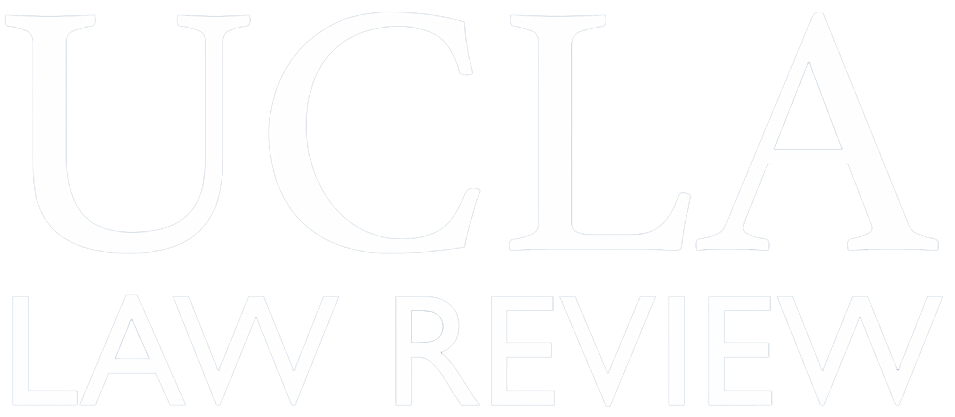International law was invented in 1789 when Jeremy Bentham introduced the term to replace the outmoded “Law of Nations.” Since then, international lawyers have spent a lot of time thinking about whether international law is in fact law, and little or no time considering how international law is international, or what international actually means. In this Article, I want to suggest that, with the...
Writing Race and Identity in a Global Context: What CRT and TWAIL Can Learn From Each Other
This Article argues that issues of race and identity have so far been underemphasized, understudied, and undertheorized in mainstream international law. To address this major gap, this Article argues that there is an opportunity for learning, sharing, and collaboration between Critical Race Theorists (CRT) and scholars of Third World Approaches to International Law (TWAIL).
A Prolegomenon to the Study of Racial Ideology in the Era of International Human Rights
Through a study of racial ideology in the history of international legal thought, this Article offers the beginnings of an explanation for how this lack of attention to race and racism came to be, and why it matters today.
Slavery Is Not a Metaphor: U.S. Prison Labor and Racial Subordination Through the Lens of the ILO’s Abolition of Forced Labor Convention
This Article calls for a recalibration, arguing that transnational labor law is deeply historicized, rooted in the persisting presence of a racial capitalism that is too easily relegated to a distant past.
Critical Race Theory Meets Third World Approaches to International Law
By and large, Critical Race Theory (CRT) and Third World Approaches to International Law (TWAIL) exist in separate epistemic universes. This Article argues that the borders between these two fields are unwarranted.
Race and Empire: Legal Theory Within, Through, and Across National Borders
Mainstream and official analysis casts the international system and its hegemonic actors in the role of humanitarian responders to a Libyan crisis not of their making. Instead, we draw attention to the ways in which the racial framing of Libya—and its subordination to imperial prerogatives—proved critical to international governance regimes for managing the country—and the bodies and territory...
Human Rights on the Border: A Critical Race Analysis of Hernandez v. Mesa
Abstract This Comment presents a historical investigation of the violence that establishes nationstate borders. The analysis deconstructs the U.S.–Mexico border through the 2010 shooting of Sergio Adrián Hernández Güereca, and asks how the framework of human rights may provide justice for this tragedy. In 2015, the Fifth Circuit for the U.S. Court of Appeals heard his parents’ legal case en banc...
The (Un)Holy Shield: Rethinking the Ministerial Exception
Abstract Does the First Amendment’s protection of religious expression mean religious organizations are free to discriminate on the basis of sex, disability, or race in hiring and firing employees? In 2012, the Supreme Court answered this question with a unanimous yes, finding that religious organizations are immune from liability for discriminating against their employees, as long as those...
Bad Characters and Desperados: Latinxs and Causal Explanations for Legal System Bias
Abstract Although there is a long history of prejudice and discrimination against Latinxs within the U.S. legal system, there is a dearth of research seeking to understand the causal underpinnings of the biased decisionmaking that works against them. While this Article discusses the experience of those who identify as Latinx broadly, in several areas it pays special attention to the experience of...
The Last Resort: Tourism Development on Garífuna Territories in Honduras Through the Lens of Structural-Dynamic Intersectionality
Abstract This Comment analyzes the gaps in protection the Garífuna have experienced both in the Inter-American Court of Human Rights (IACHR) and the U.S. asylum system, taking two cases as case studies. It argues that, in the face of increasing tourism development, the Afroindigenous Garífuna community is positioned at an intersection between the structures of a neoliberal economic model on one...
Supremacy, Inc.!
This Article opens a new area of study at the intersection of federalism and privatization. The Supremacy Clause was designed to resolve inevitable conflicts between two sovereign powers. It was not designed for the triangulated clashes amassing in our privatized era—between states and private actors doing federal work.
Deploying Race, Employing Force: ‘African Mercenaries’ and the 2011 NATO Intervention in Libya
This Article reflects on the ongoing synergies between international law, race, and empire, as they are articulated in the regulation of mercenarism. It does so by examining the role of the racialized and gendered narratives about “African mercenaries” in the context of the UN Security Council authorization of the 2011 NATO intervention in Libya.
The Civil Rights of Health: A New Approach to Challenging Structural Inequality
An emerging literature on the social determinants of health reveals that subordination is a major driver of public health disparities. This body of research makes possible a powerful new alliance between public health and civil rights advocates: an initiative to promote the “civil rights of health.” Understanding health as a matter of justice, and civil rights law as a health intervention, has...
“Blurred Lines” to “Stairway to Heaven”: Applicability of Selection and Arrangement Infringement Actions in Musical Compositions
In 2015, the “Blurred Lines” verdict catapulted the issue of music copyright infringement into the news. The Ninth Circuit upheld the jury verdict in favor of the Marvin Gaye estate in 2018, shocking the legal and music communities who worry that songwriters can now copyright a vibe. Typically, copyright infringement occurs if someone copies a “substantial” amount of original and protected...
